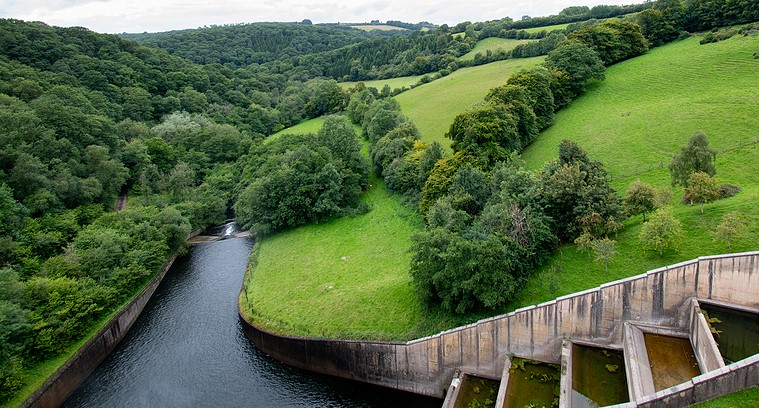News
Wimbleball Reservoir Levels Drop To 20 percent
One of the biggest reservoirs in the UK, Wimbleball Lake on Exmoor in Somerset, has seen its water levels drop to 20 per cent following the incredibly dry conditions England experienced this year… and utility company South West Water expects to see even more pressure being put on the facility over the winter months.
At this time last year, the reservoir was more than 70 per cent full, with capacity to store 21,000 megalitres of water over a 374-acre site. But on October 9th, the water firm reported that water storage levels had dropped significantly, with five of the company’s biggest reservoirs holding just 30.2 per cent of their combined capacity, the Daily Mail reports.
This summer, the region saw its fourth driest period in over 130 years, which led to the introduction of a hosepipe ban in Cornwall and some parts of Devon for the first time in 26 years.
South West Water’s drought director Jo Ecroyd observed that reservoir levels in some parts of the region are still exceptionally low and they’re continuing to fall even further. The situation will also not improve unless sustained rainfall is seen following the prolonged period of drought conditions that we saw earlier in the year.
She went on to say: “We are asking customers to redouble their efforts and do more to save water to avoid further restrictions and protect the region’s precious water resources. It is essential that people living in, or visiting the South West do all they can now to reduce the amount of water they use.
“The South West has experienced its fourth driest period since records began over 130 years ago, alongside the hottest temperatures ever recorded in the region this summer adding more pressure on water resources.”
How can businesses save water?
Businesses keen to reduce their water footprint and help safeguard precious water resources will find that there are many water-saving solutions they can implement that could make a significant difference.
Water leak detection, for example, can help you find leaks of any size anywhere on your site so you can sort out issues quickly to help reduce wastage and save your company money.
This is essential since three billion litres of water is lost through leakage each day in England alone… and since the majority of leaks take place below ground or are so small that they’re barely noticeable, you may be contributing to the problem without even being aware of it.
A water audit is another really effective way to save water (as well as money), with water usage compared against what you’re being charged for so you can see where you need to concentrate your conservation efforts.
And water flow monitoring can also help you be greener as a business, with remote monitoring equipment used to track water flow hourly for ten years. This helps maximise efficiencies and allows you to spot leaks immediately, potentially saving you thousands of pounds into the bargain.
